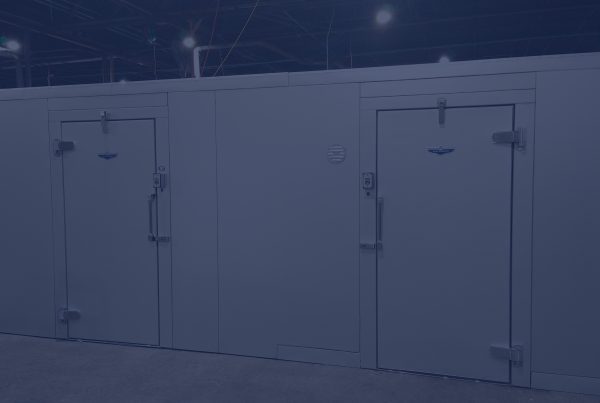Whether your chain is gearing up for LEED certification or just hoping to save on the electric bill, instituting an energy management solution can pinpoint energy waste.
Energy reduction remains an ongoing quest for convenience store operators as they look for ways to cut costs in an effort to improve their bottom lines.
Building stores to LEED (Leadership in Energy and Environmental Design) standards and seeking LEED certification is something more chains are pursuing, including Kum & Go, Kwik Trip and Quick Chek, which just opened its first LEED-certified store last month in Bayonne, N.J.
LEED is an internationally operated program encompassing the design, construction and operation of high performance green buildings established by the U.S. Green Building Council and verified by the Green Building Certification Institute (GBCI). It provides third-party verification that a building was designed and built by implementing strategies aimed at improving performance in areas such as: energy savings, water efficiency, CO2 emissions reduction, improved indoor environmental quality and stewardship of resources and sensitivity to their impacts.
Fresh & Easy Neighborhood Markets, the U.S. subsidiary of mega-retailer Tesco, which operates more than 150 grocery stores in California, Arizona and Nevada, opened its first LEED Gold certified store last September in Cathedral City, Calif., and is a pilot member of the LEED Volume Certification Program.
This month, the company is opening an additional nine new stores in Southern California, which are being built to LEED standards. Being green is a priority for the chain.
“We use on average 30% less energy per square foot than a traditional supermarket, even though we might have a higher percentage of refrigerated cases per square foot,” said Steve Hagen, director of procurement for Fresh & Easy. “We wanted to have the absolute best efficiency in our stores that we could attain, and part of that was not just installing a comprehensive energy management system, but having access to the data that would tell us how we’re doing.”
Since Fresh & Easy debuted, it has been using Verisae’s open Web-based enterprise software platform to manage maintenance, energy and emissions in all stores.
“The energy management system operates the store, but through Verisae we have total visibility into the performance of the system. It takes the data from the energy management system and creates reports we can use to determine how the stores are operating and whether the refrigeration system is running properly,” Hagen said. “It tells us the kilowatt hour (kWh) of the refrigeration systems, for example, so we can separate any areas of the store to know where we’re using energy.”
Through Verisae’s energy management system Fresh & Easy also uses Case Control, which shows exactly how each cooler case is operating. The information is regularly monitored, so when cases aren’t performing up to expectations the issue can be quickly remedied.
“With Case Control you know what case is causing the problem. With other systems, typically, if you have 10 cases in a system, you don’t know if there is a problem because the overall system might be performing well, but individual cases might be using more energy than they should,” Hagen said.
Watching Water
Water consumption is another area where Fresh & Easy is saving on its cooler costs. It has added the EnviroTower system at 37 stores and has also added it as part of its prototype design to use at all new stores. Since adding the system, which allows stores to recycle the water used in the refrigeration process, Fresh & Easy’s per store water usage has dropped from 850,000 gallons per year to less than 600,000 gallons per year. Similar refrigeration systems typically use two to three million gallons of water per year. The EnviroTower system also helps with energy efficiency, reducing the amount of energy Fresh & Easy uses on refrigeration by up to 5%.Hagen recommended that when chains are considering an energy management system to look for one that can be accessed locally and remotely, and that can provide the data needed to review and understand each store’s energy consumption. “Look for energy management systems that are open Web-based and control refrigeration, lighting and HVAC in the building to minimize the energy usage,” he said.
Wilson Baker Inc., which operates seven Baker’s Exxon c-stores in Delaware, also looks to one program to control and monitor its overall energy usage. It added Gilbarco’s Wisdom Intelligent Device Management System at two locations in mid-June and expects to see 15% or more in savings from instituting the program.
Wisdom is controlled on a single dashboard screen and Baker’s uses it to monitor, not only its coolers, but its HVAC controls, lighting, electric usage, store traffic, etc.
The system allows Baker’s Exxon to set and monitor the temperatures for all the coolers and set alarms to draw attention to unwanted spikes in temperature. It also can monitor the opening and closing of cooler doors.
“Our walk-in freezer at one site is inside, so you go through the cooler and then into the freezer. In the two months since we’ve added the system, we’ve had three or four alarms tell us that door had not been closed,” said Mark Baker who manages the operations side of the family business. “So it kept us from dumping our freezer air into our cooler.”
The controls are all visible via a Web browser. “You can click on various tabs to see the configuration, the alarms and their settings, your history—it’s very intuitive and simple to use,” Baker said. “I can see the box temp, the set point, the compressor status and how long the doors have been opened or closed. I also have a graph charting the temperature for the last 24 hours, and I can expand that to look at the last week. The system let’s me enjoy flexibility to dig into information beyond that, but for daily monitoring it’s simple and all right in front of you.”
The program also helped Baker’s Exxon identify cooler door heaters that weren’t working. “We saw the amp draws on those doors that were fogged up and found they were not drawing in the proper amperage,” Baker said. Being able to notice such issues on the corporate end of the business ensures that if stores miss or ignore a similar costly problem it can still be discovered and
remedied quickly. Baker’s can monitor the cooler door heaters remotely and opt to adjust it or leave it on automatic, which is ideal for less humid months.
The original Convenience Store Decisions article can be found here.
“Energy savings is incredibly important in our business,” Baker said. “Everyone’s c-store business is in a constant battle to fight expenses, largely due to fluctuating electricity costs. Installing systems like this has a relatively short payback. It’s a no-brainer as far as we’re concerned and something we feel we have to do to stay competitive.”




excellent cost-cutting tips.